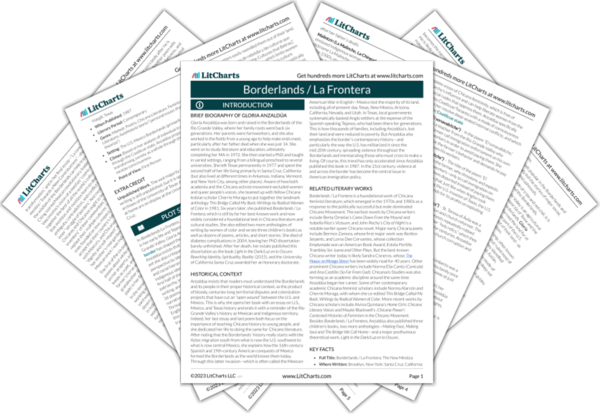In line with the theory of literature that Anzaldúa developed in “Tlilli, Tlapalli,” this poem centers on images (not narratives) and condenses metaphors about the border, the supernatural, and the female body into a broader commentary about life, death, the inevitability of change, and humans’ powerlessness before greater forces of the universe. The border turns Chicanos into “other people’s trash,” as white people deem them valueless; Tlazolteotl puts the woman back in touch with the more unsavory aspects of existence that Christianity and modern life shy away from; and the woman dies by losing her womb—her ability to create new life—which may suggest that we are only truly alive so long as we can still change, adapt, and reshape the future in our image.
